By Jock Elliott, KB2GOM
The XHDATA D109-WB is a small radio that hits a sweet spot on the price/performance curve, delivering a lot of performance for not a lot of money (probably less than $60 US, depending on the source).
The D109-WB measures 5.9″L x 1.45″W x 3.07″H and weighs just over 10 ounces. It covers FM 64-108MHz, AM (medium wave) 520-1710KHz, LW 153-513KHz(9K), SW 1711-29999KHz, and seven NOAA Weather Radio channels 162.40-162.55MHz with alert function. It does not receive single-sideband signals. It offers 100 FM memories, 100 LW memories, 100 MW memories, and 300 SW memories. Further, it offers 1, 2, 3, 4, and 6 kHz bandwidths on MW and SW bands.
On the left side of the front panel is a plastic grill that fronts an inch-and-a-half speaker. On the right side is a small LCD screen with backlight that functions as information central for the D109-WB. Below it are 15 buttons (3 rows of 5 buttons each) that control various functions, including an “SOS Emergency Distress Sound and Light Alarm,” manual tuning and various auto scanning and auto memory storage schemes, band selection, DX/local receive mode selection, 9/10 kH MW spacing, clock alarms, bandwidth selection, a key lock/display switch, and a manual tune/memory mode switch, among others. Below those 15 buttons is a 3 x 4 numerical key pad for memory and direct frequency entry functions. To the right of the keypad are 5 buttons set in a circular pattern for controlling Bluetooth use and connectivity and MP3 playback (I did not test these last two functions).
On the right side of the case, you will find a type-C socket for plugging in a cable to charge the 18650 battery, a wheel for volume control, and a tuning knob.
On the left side of the case are 3.5 mm headphone and external antenna jacks.
On the back panel is a flip-out support and a hatch for accessing the battery. On the top, there is a fold-over 21-inch telescoping antenna and, on the bottom, two anti-skid rubber feet.
In all, I found the D109-WB to be solidly constructed with fit and finish appropriate to a radio in its price class. The only serious deficit I found in the D109-WB was the extremely small type in the owner’s manual. Consult the photograph below to see what I mean.
The D109-WB was straightforward to operate, and I enjoyed it. One cute trick was variable-speed tuning: on MW, turn the knob slowly, and it will change frequency in 1 kHz increments. Turn the knob fast, and the tuning rate jumps to 10 kHz increments (or 9 kHz, if you have selected that tuning option). Variable-speed tuning works the same way on the shortwave bands, and on the FM band, the slow tuning rate is .01 MHz, and it jumps to .1 MHz when the knob is turned quickly. I had not experienced variable-speed tuning in any other radio, and I like it . . . a lot.
But what I was really wanted to know was how well did the D109-WB perform?
Now here’s the rub: I don’t have any test equipment . . . but I do own a CCrane Skywave 2. So I sat down on a bright sunny afternoon with the D109-WB and the Skywave 2 side-by-side and compared them. I found that both would receive two weather channels loud and clear and one more weather channel marginally. Then I tuned firm the medium wave band, then the FM band, running the two radios in parallel and found that there was nothing that I could hear on Skywave 2 that I could not also hear on the D109-WB, and vice versa. In other words, I found the electrical performance of the two radios to be very similar . . . except, of course, that the Skywave receives the AIR band, and the D109-WB does not.
One of the things that I enjoy doing is to grab a radio, select a band, punch the SCAN button, and see what’s out there. Since I also own a Tecsun PL-880, I decided to run a scan on each band on each radio (D109-WB, Skywave 2, and PL-880) with its native whip antenna and see how many detectable signals I could find on each. By “signal,” I mean any place where the scan stopped where I could hear music, voices, or anything that sounded like a transmitted signal, as opposed to pure noise.
So here are the results of two different testing sessions on two different nights:
D109-WB vs. CCrane Skywave
D109-WB vs. Tecsun PL-880
A caution: before you start drawing conclusions from the results above about which radio is more sensitive than another, it is important to consider that those results may be heavily skewed by whatever “SCAN” algorithm is programmed into each radio. Further, the parameters of the SCAN algorithm for a particular radio are a black box to those who use the radio. What I can conclude from those results is that, if you want to be a lazy DXer like me and use the SCAN button for cruising the bands, the D109-WB will deliver pleasing results.
Since the D109-WB has a socket for plugging in an external antenna, I plugged in a 45-foot loop antenna. The D109-WB overloaded, but when I set the DX/local switch to local, the overloading went away but there was still a boost in signal-to-noise from the external antenna.
So, the bottom line: the XHDATA D109-WB delivers a whole lot of fun and performance at a very reasonable price, and I can easily recommend it for both newbies and old-timers alike.
In fact, if you want to turn a kid onto radio, here’s an idea: give the child a D109-WB and a paper atlas, explain how both work, then set that kid to work logging as many stations as possible and looking up where they are located. Heck, that sounds like fun to me.
Click here to check out the XHDATA D109-WB on Amazon.com
(note: this affiliate link supports the SWLing Post at no cost to you)

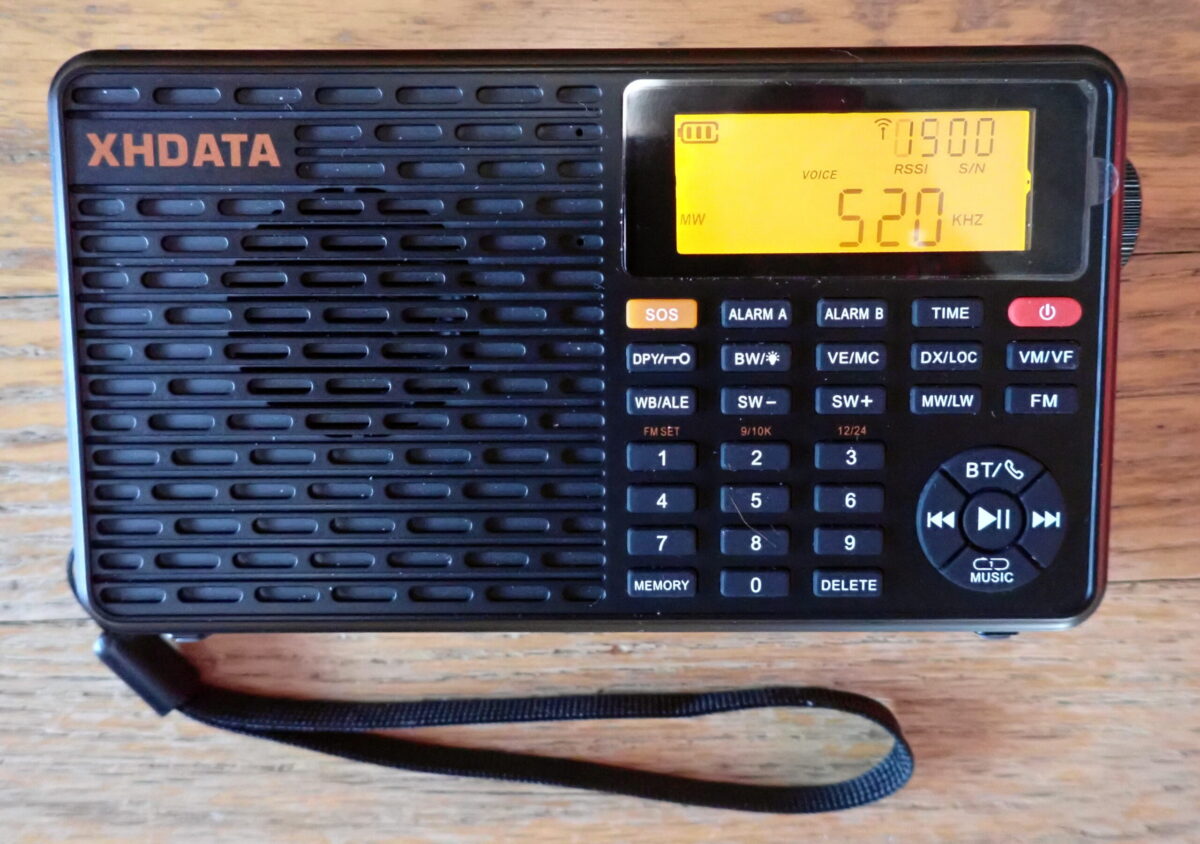
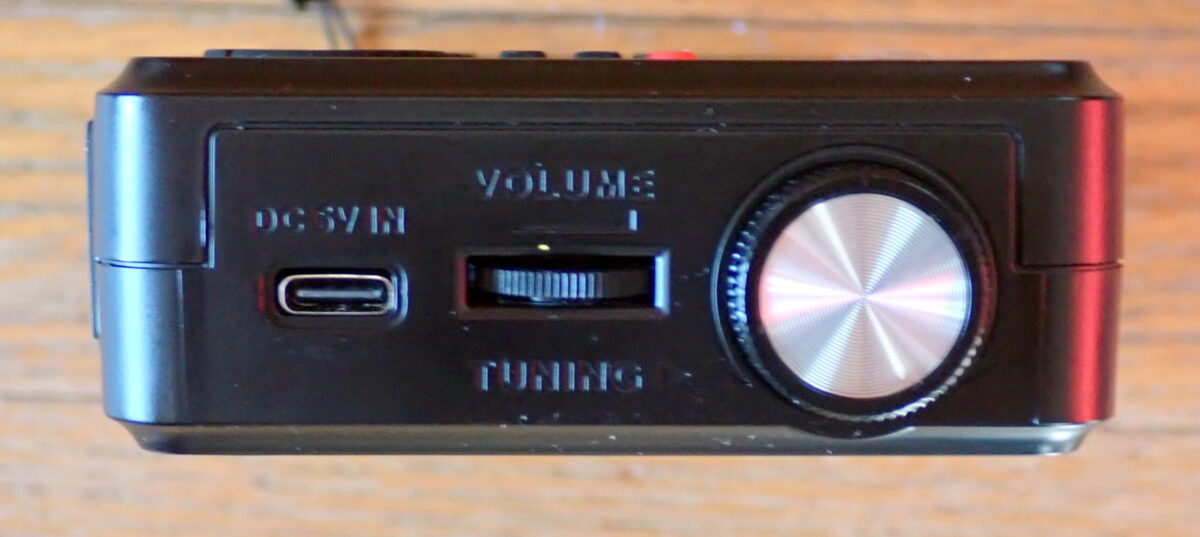
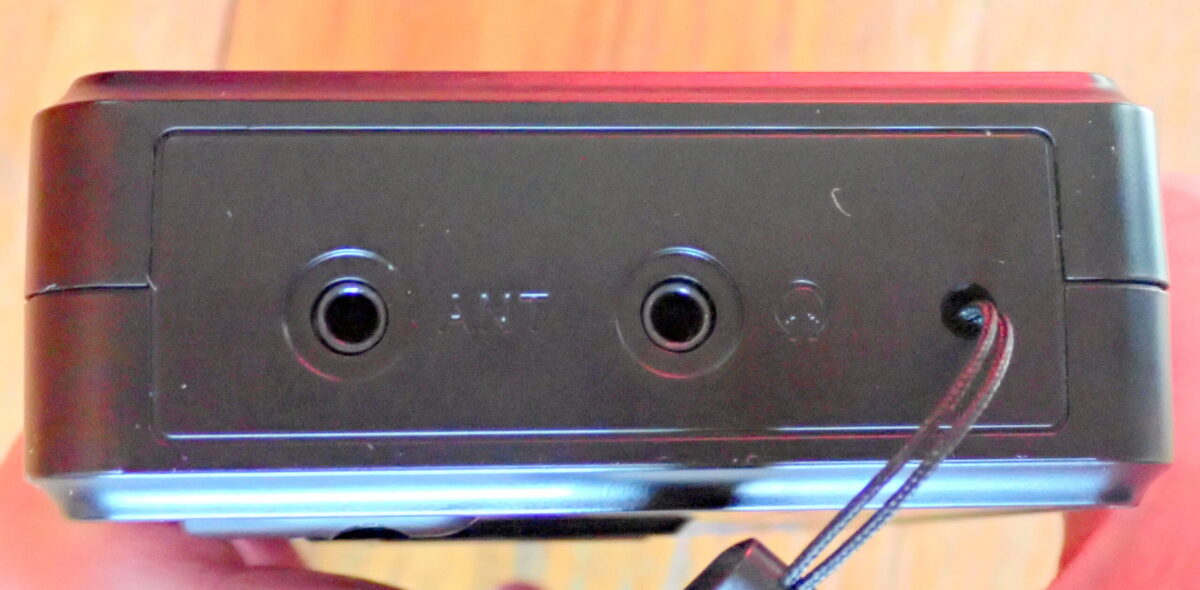
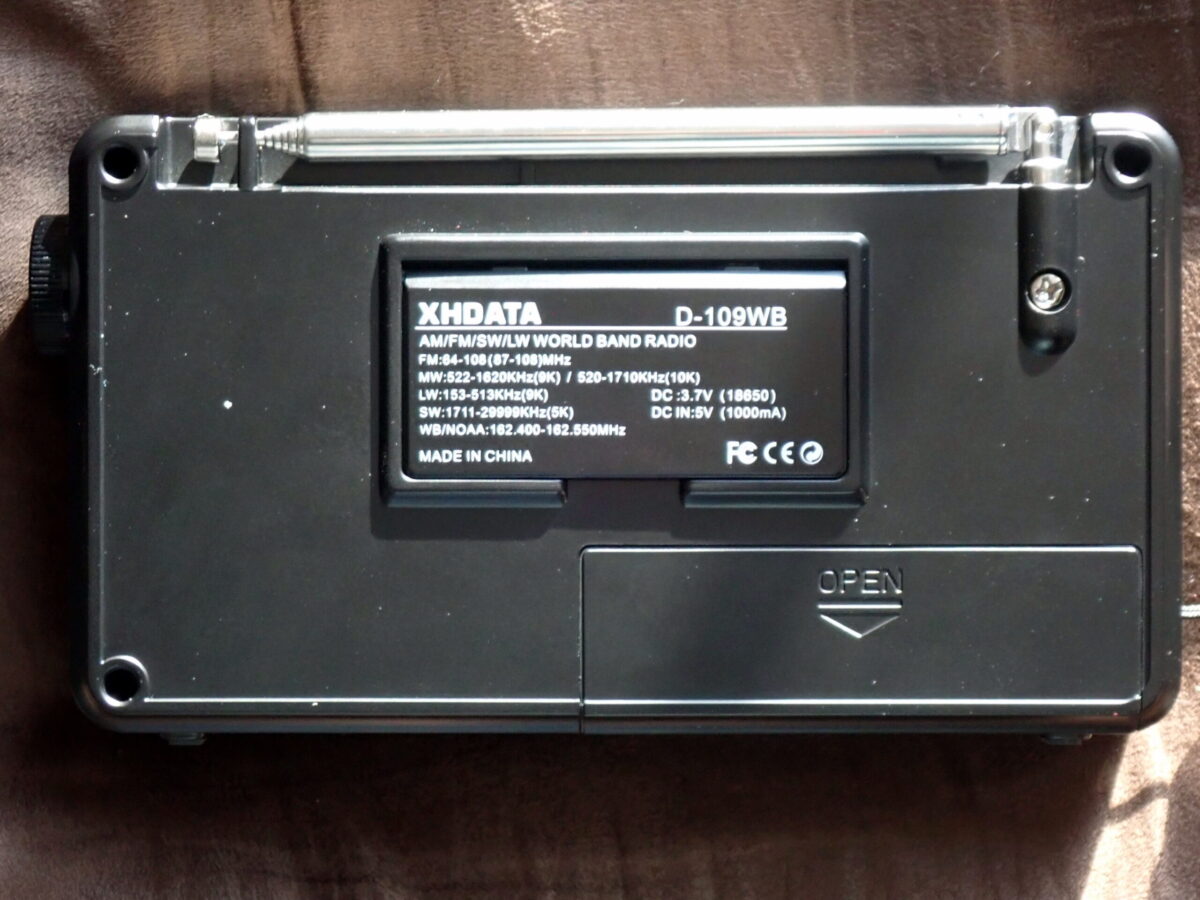
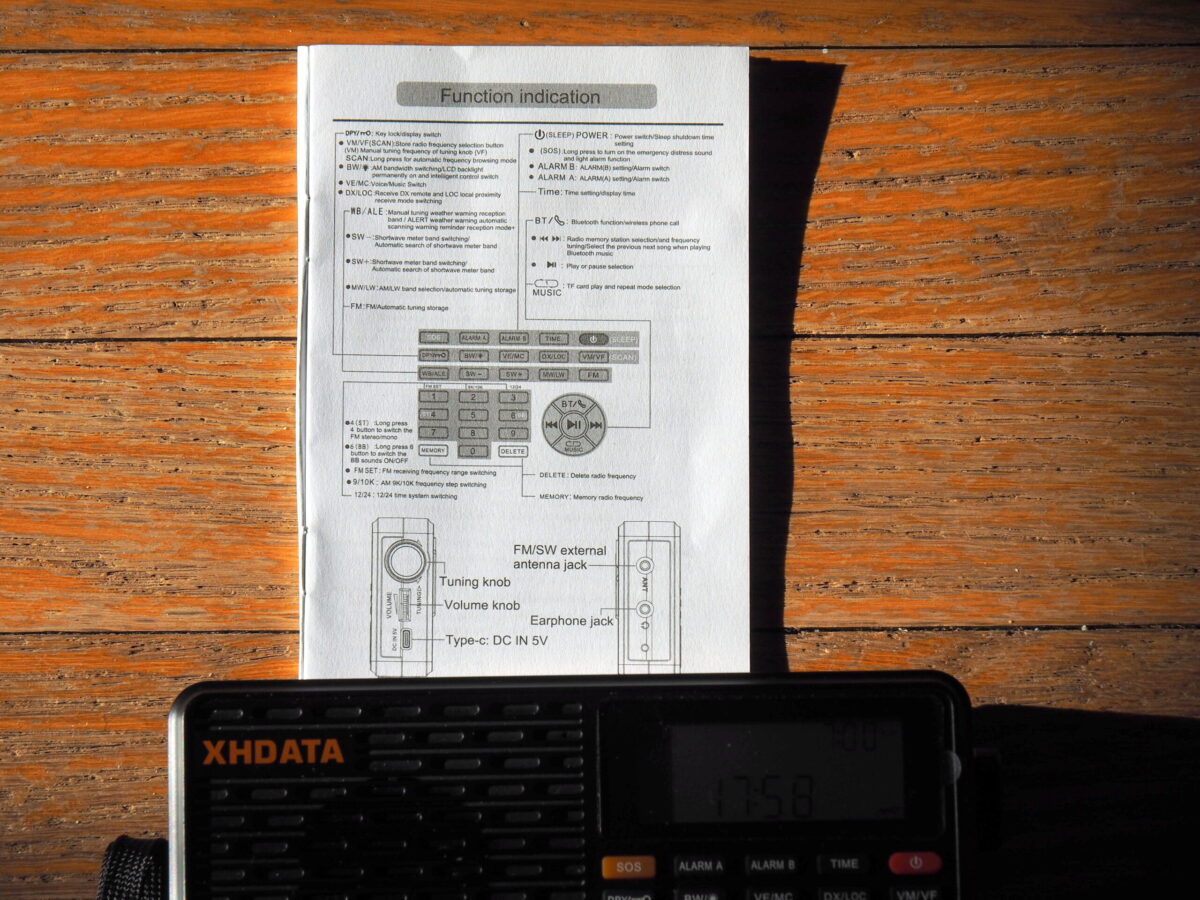


I had to pick one up, the price was right! What I haven’t seen/read here is how well this unit sounds – on all bands! Aside from a weird overload on one particular FM station in my neighborhood (no where else), I wish the mp3 player would shuffle. Otherwise, a solid “all-around” performer. This radio is well worth the investment.
Did anyone here own the Radio Shack 440Dx/ Sangean 803A, from the early 1990’s…? I may or not purchase it, so if someone tell me his did it perform against the Sony 7600 or the present 109..?
I still have a Sangean 803a, but it has not been turned on for many years 🙂 It was my “best” rx back in the day, and performed really well, even when it was next to noise 1990’s computers. I cannot say how it compared to the Sony, as I never had one.
I used to sometime leave it connected to a computer to record any activity on a SSB frequency, and you can hear how it sounded in 1998 during the disastrous Sydney yo Hobart yacht race , as I stuck the recording onto ewe-toob so I didn’t lose it .. it is here https://www.youtube.com/watch?v=uh7VsG_CpqU It was already an “old” radio by then too.
Thanks for reply..!
Great review, thanks for this!
I have both the D-109 and the Tecsun PL-880. In direct receiving comparisons, my ‘109 is more sensitive on MW than my PL-880. It’s a fabulous little receiver. It’s right up there in sensitivity with my Sangean ATS-909X too, which my primary portable I use.
Bill,
Thanks for the kind words and your comments.
Cheers, Jock
High Jock,
Thanks as always for your insightful review. The first thing I do with a new radio is download a PDF copy of the manual, then print it out so it fills 8” x 11” paper. This at least makes the copy readable for my old eyes. Beyond that, the usefulness of these manuals is marginal for several reasons. But it’s a start. I usually mark them up or many times write up my own procedures. I will also download and print out helpful reviews (SWLing Post, Jay Allen, etc.}, to supplement the manuals. The other thing is an electronic copy is easily searchable when you don’t know where the author might have hidden information.
Keep up the fine postings.
Thanks, Bob, for the kind words and the good idea!
Cheers, Jock
..perfect radio if it had Air Band & SSB..!
There’s a lot of buzz on the ‘net about the new TEF6686 radio chip that is used in cars, so if these “new-wave” radios, can use this chip, it would be “Holy Grail” of radio technology…!…?
Mike,
“..perfect radio if it had Air Band & SSB..” The CCrane Skywave SSB 2 has all of that. See my review here:
https://swling.com/blog/2022/11/checking-out-the-new-c-crane-cc-skywave-ssb-2/
Yes, I’ve been reading the buzz about the TEF6686 radios . . . intriguing!
Cheers, Jock
I have one and I can say it works really, really well on FM AND MW and SW as well. I’ve not had any overload on the TEF 6686 even with my bigger outside antennas. It also does well with a passive YouLoop if you have one of those.
The Qosoden SR-286 is pretty phenomenal in this regard. Besides the fact that it has BOTH swithable internal attenuator and preamp for external antennas, it is pretty difficult to overload under most usage conditions.
Thanks for the review Jock! I recently purchased this radio and I enjoy using the WB feature as well as BT mode for playing music from my phone. I did notice the SW frequency overload with the wire antenna as well (but no overload with the telescopic antenna) and will try the “DX/Local” button next time this occurs.
Have a great day!
Penny,
Thanks for the kind words. I think the “local” setting will help.
Cheers, Jock
Hi Jock,
I just checked a SW frequency and used the DX/Local button as you suggested. Wow, what a difference…a much clearer reception.
Your advice is much appreciated!
Thank you!
Cheers!
Penny
Glad to help.
Cheers, Jock
Hi Jock, Is it possible to delete my last comment as I made a mistake and did not want my full name to appear in the post…sorry about that.
thanks,
Penny
I fixed this for you, Penny. 🙂 -Thomas
Using the original D-109 at home I do have significant bleedthrough of strong MW signals into the SW bands.
Perhaps the DX/LOC switch on the new version could help with this without too much loss of sensitivity.
Nice review, Jock.
100 memories on LW, when thre are only 15 channels on that band. Sometimes Chinese logic eludes me…
Jacques,
Thanks for the kind words.
There are lots of times when I have been baffled by radio designer’s choices.
Cheers, Jock
Interesting review, Jock, and your suggestion for turning a kid onto radio is a great one! I was just talking with a friend yesterday and remarking how if we had been using SW radio in grade school I would have found geography a lot more interesting!!
The scanning results are impressive, your cautions also duly noted, but impressive none-the-less.
Cheers! Robert
Thanks, Robert.
“if we had been using SW radio in grade school I would have found geography a lot more interesting!!”
Darn right!
Cheers, Jock